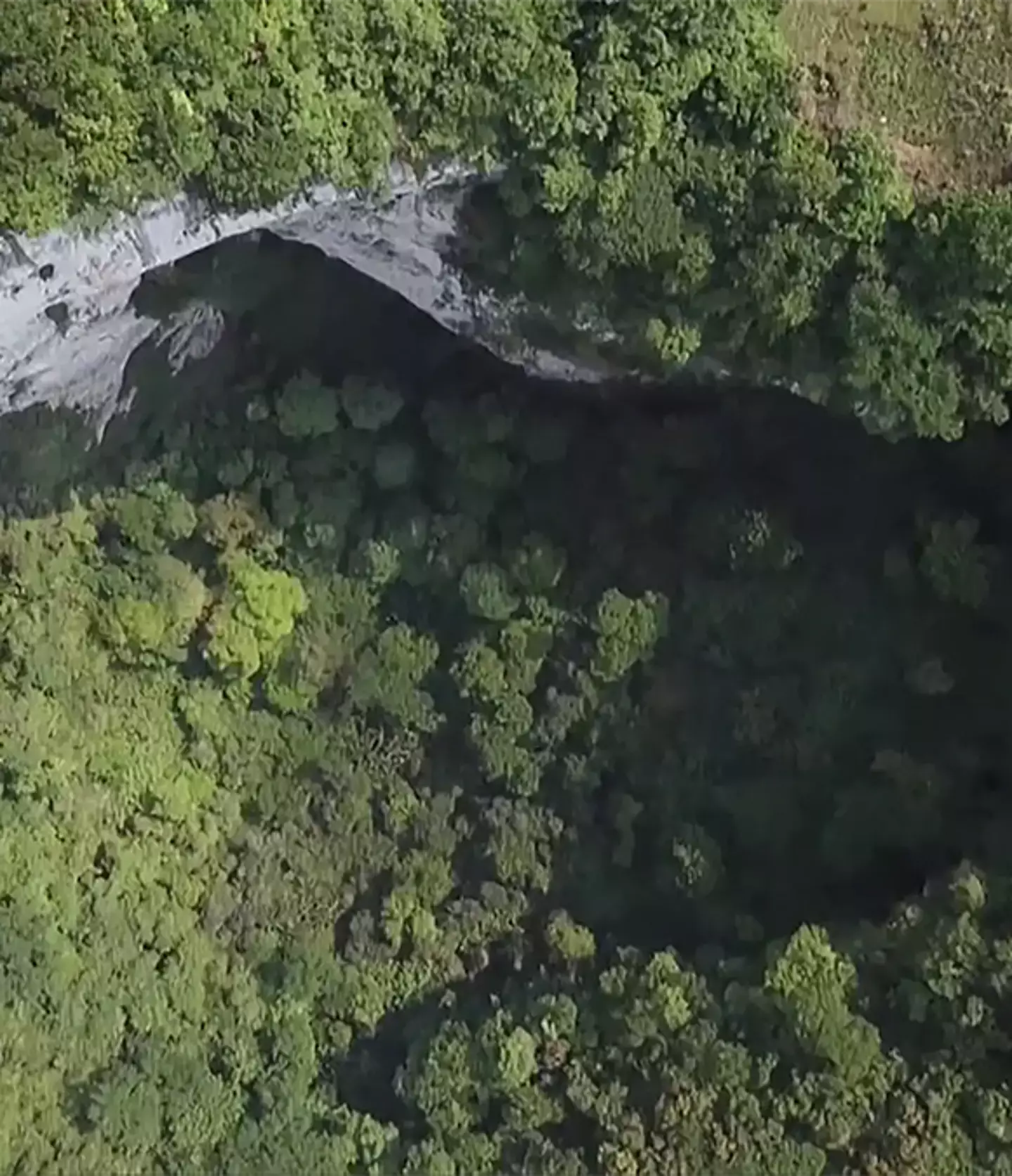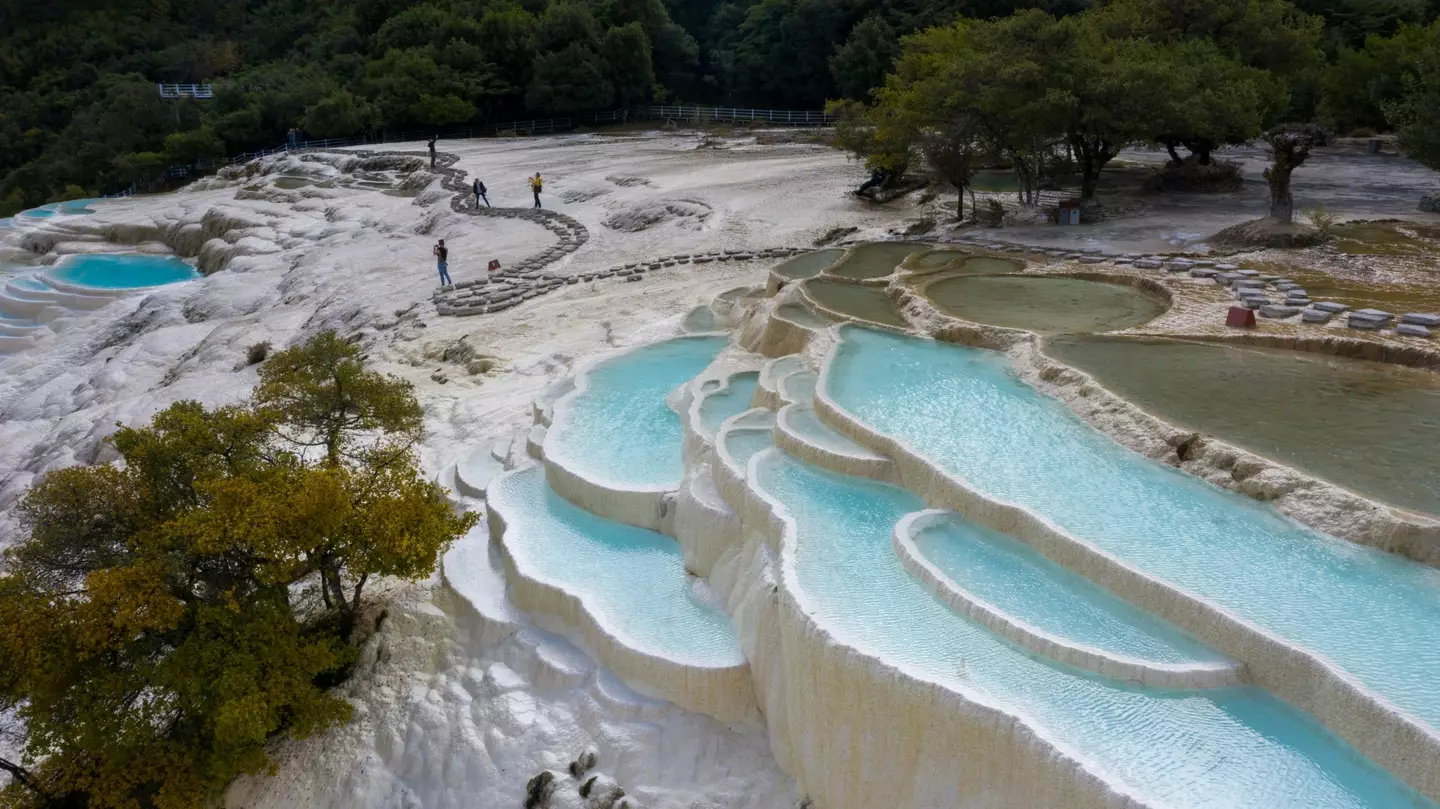
A team of scientists have uncovered an ancient forest hidden 630 feet deep underground within a massive sinkhole in China.
The discovery was made in 2022 during an exploration of the Leye-Fengshan Global Geopark in Guangxi Zhuang - a region renowned for its karst landscapes.
Karst terrain forms when dissolving bedrock creates sinkholes due to erosion both above and below ground.
Slightly acidic rainwater, amplified by carbon dioxide from the soil, flows through cracks in the bedrock.
Advert
Over time, this water carves out underground spaces and tunnels.
When these spaces get large enough, the ground above can collapse, creating sinkholes.

Karst landscapes are characterised by other things as well like large forests, caves, springs, and natural rock bridges.
Advert
The sinkhole discovered was 1000 feet in length, 490 feet in width, and nearly 630 feet in depth, which is roughly the height of a 50-storey building!
When the explorers descended into the sinkhole, they discovered a highly preserved ancient forest with 130-foot-tall trees and three massive cave entrances.
Interestingly, researchers suggest that these caves could contain several unidentified species of plants and animals, which just adds to the excitement of the expedition.
According to UNESCO, the Geopark where the sinkhole was discovered is described as a ‘territory of caves’, featuring the ‘world’s longest natural bridge’.
Advert
The website explained: 'The UNESCO Global Geopark is primarily sedimentary with more than 60 per cent of 3000m thick Devonian to Permian carbonate rocks.
'It forms an 'S'-shaped structure and a rhombus configuration in the karst areas of Leye and Fengshan counties respectively, which controlled two large subterranean rivers’ development, the Bailang and Poyue.'

George Veni, the executive director of the National Cave and Karst Research Institute, explained that karst landscapes can vary significantly worldwide due to differences in their geology and climate among other factors.
Advert
'In China, you have this incredibly visually spectacular karst with enormous sinkholes and giant cave entrances and so forth,' he explained.
'In other parts of the world, you walk out on the karst and you really don’t notice anything. Sinkholes might be quite subdued, only a meter or two in diameter.'
Southern China is famous for its karst landscapes filled with sinkholes, forests, and caves. But China as a country boasts the most karst sites globally, with over 10,000 formations.
The largest is not Geopark sinkhole is not the largest however.
Advert
This crown goes to Xiaozhai Tiankeng sinkhole - also known as The Heavenly Pit - with a volume of 130 million cubic metres.
Measuring 2, 100 feet deep and 2,000 feet long, this sinkhole is home to over 1200 species of plants and animals and even includes a waterfall within its depths.